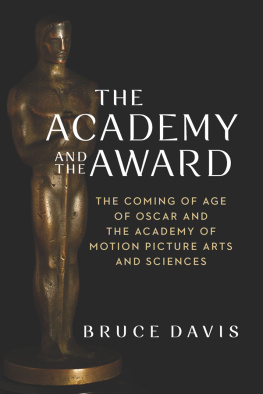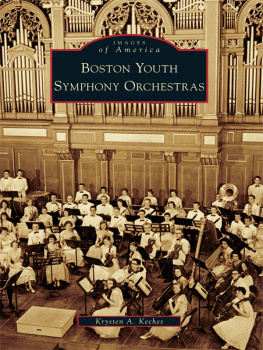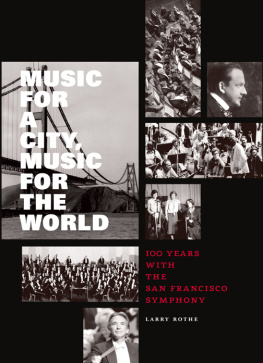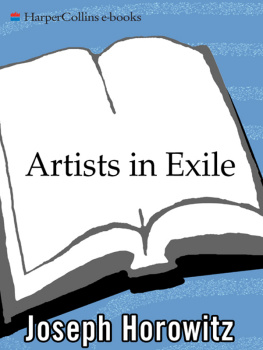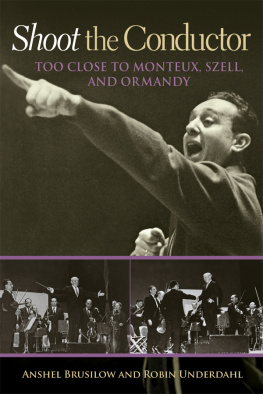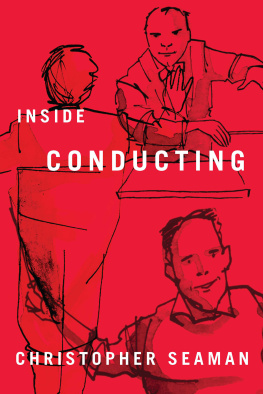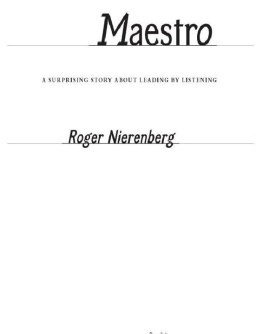Praise for Behind the Baton
As someone who worked many times over many years with Gerard Schwarz, I was always amazed with his enormous capacity for great work. Whether he was premiering new music (in which he has made an enormous contribution), or conducting the standard repertoire, the joy and natural musicality he brought to everything made every performance a memorable one. This book, Behind the Baton , gives us an in-depth look into the qualities that make a great conductor as well as a true servant to music.
HORACIO GUTIRREZ, PIANIST
Gerard Schwarz has been a towering figure in the music world for decades. Now he brings his unique insights to a brilliantly written book that spans his marvelous career. This is a must-read for anyone interested in our great art form.
MISHA DICHTER, PIANIST
Behind the Baton affords readers entrance into the mind of a great musician who has accomplished so much in our world. This book tells the remarkable story of his great championing of American music, from Howard Hanson to Jennifer Higdon.
BRIGHT SHENG, LEONARD BERNSTEIN DISTINGUISHED UNIVERSITY PROFESSOR OF MUSIC, UNIVERSITY OF MICHIGAN
Copyright 2017 by Gerard Schwarz
All rights reserved. No part of this book may be reproduced in any form, without written permission, except by a newspaper or magazine reviewer who wishes to quote brief passages in connection with a review.
Published in 2017 by Amadeus Press
An Imprint of Hal Leonard LLC
7777 West Bluemound Road
Milwaukee, WI 53213
Trade Book Division Editorial Offices
33 Plymouth St., Montclair, NJ 07042
Tim Pages review Gerard Schwarz Leads Elegant, Propulsive Mozart is reprinted from New York Newsday by permission of Newsday, PARS International Corp.
An excerpt from Gerald Larners review is reprinted from Times of London by permission of News Syndication UK.
An excerpt from Donald Vroons review in the July/August 1994 edition of American Record Guide is reprinted by permission of ARG.
Printed in the United States of America
Book design by Michael Kellner
Library of Congress Cataloging-in-Publication Data is available upon request.
www.amadeuspress.com
Contents
Chapter One
Growing up, I always knew my parents story of getting out of Austria and coming to the United States. My mother, Gerta, was from Vienna, and my father, Hansor John, as he later became knownwas from Mdling, one of the citys suburbs. In the 1930s both were studying at the University of Vienna medical school. But beginning in 1938, Jews were no longer allowed to go to medical school or to any school of higher learning. One day signs went up throughout the halls of the medical building: No Jews Allowed to Attend Classes Anymore. My parents left Austria for the former Yugoslavia, now Slovenia, where my paternal grandmother had a houseit became my fathers familys country housein Rogaka Slatina, about an hour outside of Zagreb. They applied for a visa to the United States from Zagreb because my father had not only an Austrian but also a Yugoslav passport. While their applications were being processed, they headed west to Switzerland. They finished their final year of medical school at the University of Basel and got married. Then, degrees in hand, they retrieved their visas from Zagreb, purchased two tickets on the le de France , and sailed for New York.
Several years earlier my paternal grandfather, Julius, just before he died, had opened a Swiss bank account, as he had felt the rise of anti-Semitism throughout Austria. This fortuitous detail is why my parents were allowed to enter Switzerland and could afford to live there for the year.
In 1939 they settled in Hoboken, New Jersey, where my two sisters, Bernice and Jeanette, and I were born. My father worked at St. Marys Hospital and eventually went into private practice in Weehawken, New Jersey. My parents were incredibly smart and gifted. They both played the piano, and they were great music lovers. Their children were exposed to everythingtheater, opera, ballet, symphony concerts. We would go to the New York Philharmonic at Carnegie Hall and to the New York City Ballet at City Center. We all played the piano from the time we were five.
My mother often used to say, Youre the son of the doctor, which meant I had to work at a different level. My father worked from seven oclock in the morning until eleven oclock at night as a surgeon and family physician. I only saw him at dinnertime for half an hour. He worked very hard, as did my mother after she went back to medicine when I was eight. Before that she was simply our mother, and we were unaware that she was also a physician. My work ethic derives from their example.
When my mother returned to medicine, she did a specialty in neurology at the Veterans Hospital in West Orange, New Jersey, and then a specialty in psychiatry at Bellevue Hospital in New York. She was a brilliant woman, but it was a difficult time for her: after being away from medicine for twelve years, she had to reintegrate medical studies into her life, then take her boards and go through certification all over again. She had forgotten a lot, and my father became her coach.
As a female doctor she was unusual in America in the 1950s, just as she had been as a female medical student in Austria in the 1930s. How many women in Austria were doing that at the time? To take an example from the music world, the Vienna Philharmonic did not have any female members then. Today they have a grand total of about six. My mother never made her decision to go into medicine into any kind of social cause. When the womens movement caught fire, she never quite got it. She thought, you just do what you dowork hard at a very high level. For her, that meant becoming a doctor and, ultimately, a psychiatrist.
My fathers mother, Anna Schwarz, lived with us. She was the only living grandparent I had and was a most extraordinary and loving person. In a sense it was she who brought me up. My parents had their hands full with my sisters, and when I came along, I became my grandmothers favorite. She was happy to take over, and my mother was happy with the arrangement.
Our house was furnished in a typical Viennese style: antique furniture, portraits trimmed in gold, an abundance of porcelain knickknacks, and a predominance of red, yellow, andmy mothers favorite colorturquoise. It was filled with warmth, history, family, and elegant clutter. We used to have family gatherings in the basement. It was quite large, and we had stained glass windows with fluorescent lights behind, so it seemed like daylight all the time. There was an organ, a huge brick fireplace, a long table that seated about twenty, and an old-fashioned bar. From the time I was about four, my father would say, Lets go downstairs and listen to something together. He would then play me recordings of Beethovenmy favorite.
He did everything in those daysdelivered babies, treated breast cancer, everything. And when you do everything, youre on call all the time. I would often make house calls with him. We would drive together to somebodys house, and hed go in with his black bag while I sat in the car and waited for him to come back.
My father was a real patriot. He would only buy American cars and American products. He said that in 1939 America took him in, with his German accent, imperfect English, and German name, and he was always grateful to this country. There was a time when shoes werent made in the United States, so he bought English shoesEngland was okay too.


